How to use WordPress as Contact Management System
A contact management system, in its essence, is a tool that enables users to easily store and find contact information, such as names, addresses, and telephone numbers. The more sophisticated contact-centric databases provide a fully integrated approach to tracking of all information and communication activities linked to contacts.
Usually, when we think of a WordPress site we think of blogs, stores, membership sites. Often what comes to mind are the aspects of WordPress for end users. And for that WordPress is great. But there’s another use for WordPress that is often forgotten. The entire admin panel can be a data management system in itself.
Our goal in this article is showing you how to use WordPress for contact management. We’re going to use the built-in tools for users management and the custom user fields. This is going to allow us to create a powerful management system, with all the information you need in one place. Additionally, it’s possible to use WordPress plugins to extend this functionality and improve your online contact management.
Let’s get started!

WordPress: Contact Management System hidden in plain sight
It is true that WordPress has come a long way. From just a blog software to a powerful Content Management System. But what is often forgotten is that a good CMS has great user management tools, as well. Thus, usually we focus on how to use WordPress to store different kinds of content, but we forget about users.
It’s possible to create a contact database in WordPress, just by creating users and using its custom fields, user roles, and taxonomies. Furthermore, it’s possible to connect with almost any API using plugins. Therefore, you can connect with external mailing systems, stores, form builders, tax software, and any other software you want. Instead of being locked into software that you don’t control, you have an open source contact management software.
This is going to allow us to create a powerful management system, with all the information you need in one place
Essentially, the benefits here are around control. You won’t depend on external software. In addition, you won’t depend on external development teams. You can easily audit the code, entries, check issues. Then, you can dictate not just the business rules, but how the entire software works too. And it can be online, or even on your current site. Thus, you always have access to it, and you can even export your data if you want to.
Adding users to your Contact Management System
Undoubtedly, your database defines how useful your contact management system can be. And even before you can add your data you have a decision to make. When it comes to WordPress users’ creation there are two options. You can manually insert users, or you can import them.
If you already have some user data a manual insert is probably the best option. This works particularly well if you have registered users and just want to use your backend to better organize it. Then you can simply add new users or manual correct data entry.
On the other hand, if you are starting fresh a plugin would be the better option. That’s because plugins can help you import multiple users at once and save a lot of time. In addition, even if you pick this route, you still are able to add new users or correct them manually.
As for how to add WordPress users, you can use the admin interface. This is done in the WordPress Dashboard > Users Add new. When adding them, make sure to unclick the “Send the new user an email about their account” option.
If you don’t do this, your users get a weird email about an account registration. Since you don’t want to allow user logins, there’s no reason for them to know passwords or user logins.
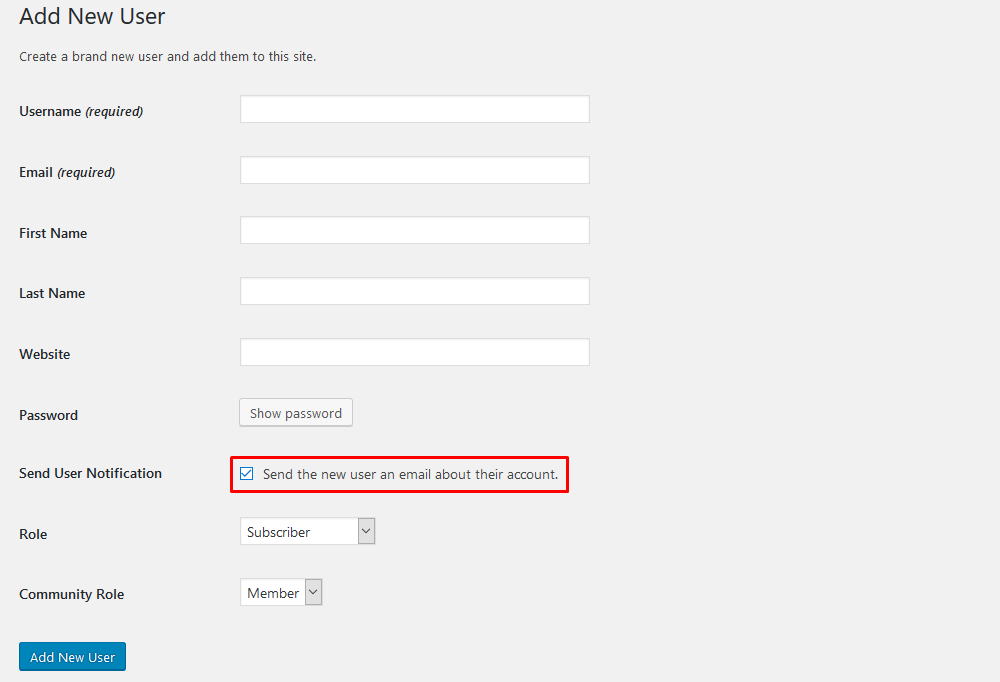
There are many methods you can use for user imports. You can learn about regular CSV imports in our article “how to import WordPress users from CSV files”.
Storing custom user fields for contact management
Once you have your users, it’s time to add custom fields and process this information. There are many ways to create your custom fields. If you use a contact management plugin such as Users Insights, you can create plain text fields to store your user information.
This is done under Users Insights > Custom Fields:
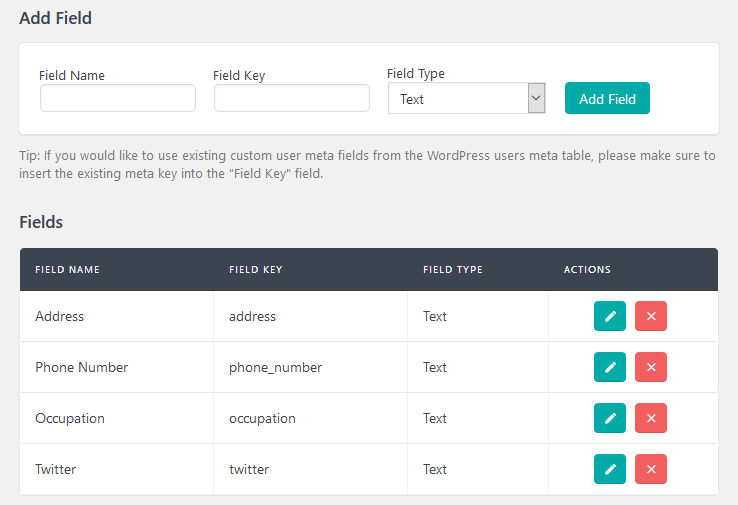
Then you can see and edit these custom fields in your user profile section. To get to this page you can check Users Insights > Click the username you want to check:
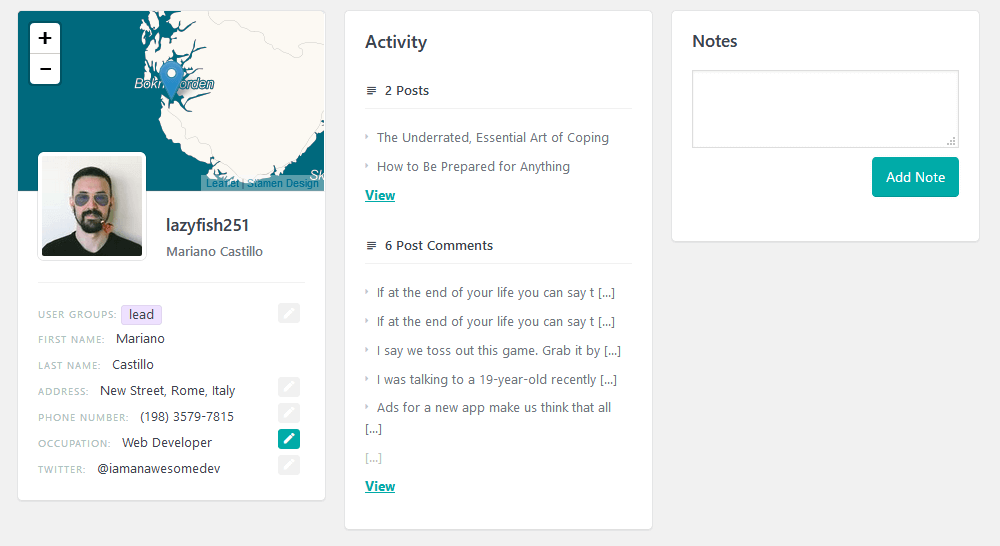
This allows you to use the custom fields for later processing using the Smart Filters as well.
Another idea is using plugins to actually create and populate your custom user fields. Here are some good options you can use:
- Profile Extra Fields by BestWebSoft – Many field types that you can use. You can use shortcodes to display your data in posts or pages.
- Advanced Custom Fields – We’ve talked about this plugin before, and at its core, this is a form builder plugin. But the thing is, you can build form for user registration and profile updates. In this way, you can store your desired data with high flexibility for data entry
- User Meta – A simple plugin to add new custom fields to the WordPress registration, as well as frontend registration.
Storing and processing your data for advanced online contact management
Even more important than creating a WordPress contact management system, is processing the information inside of it. And in this case, the exact filters and searches depend on your end goal, but let’s see some examples.
In case you are looking for a specific customer, you can search for their email or name. You can search using filters such as “contains” or “starts with” for more tailored results:
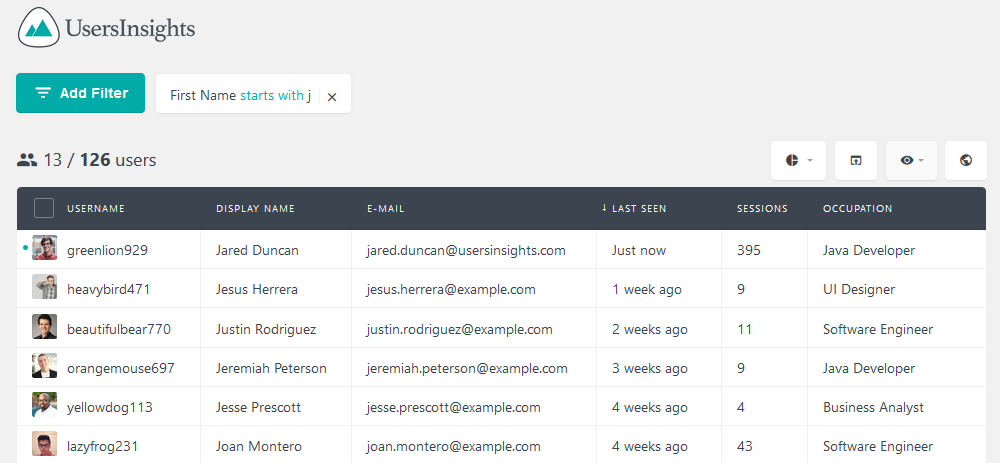
But the real power of contact management software relies on bulk searches. You can find out the most common occupation among your users, for example:
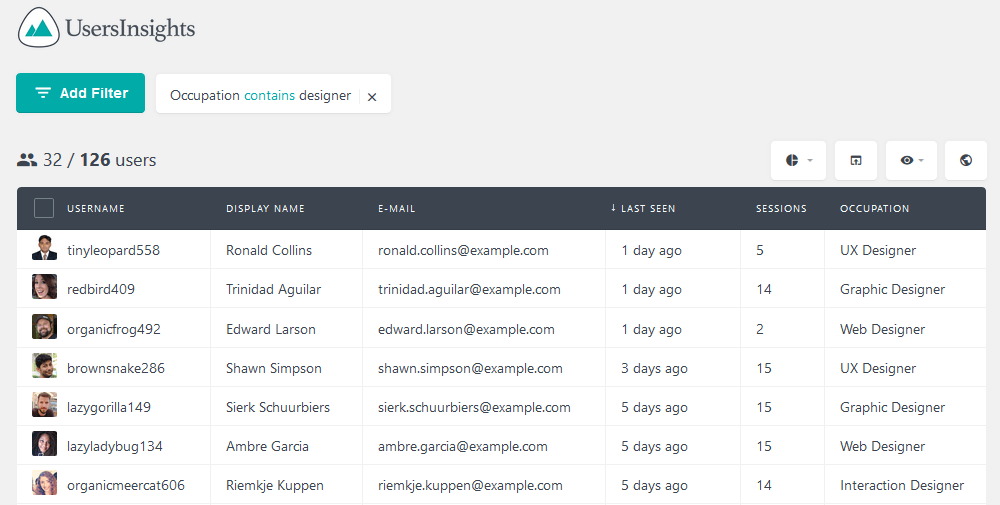
It’s possible to track down customer demographics by using their telephone area code, or even their geolocation. In this example, let’s see which users are from the area code “02”:
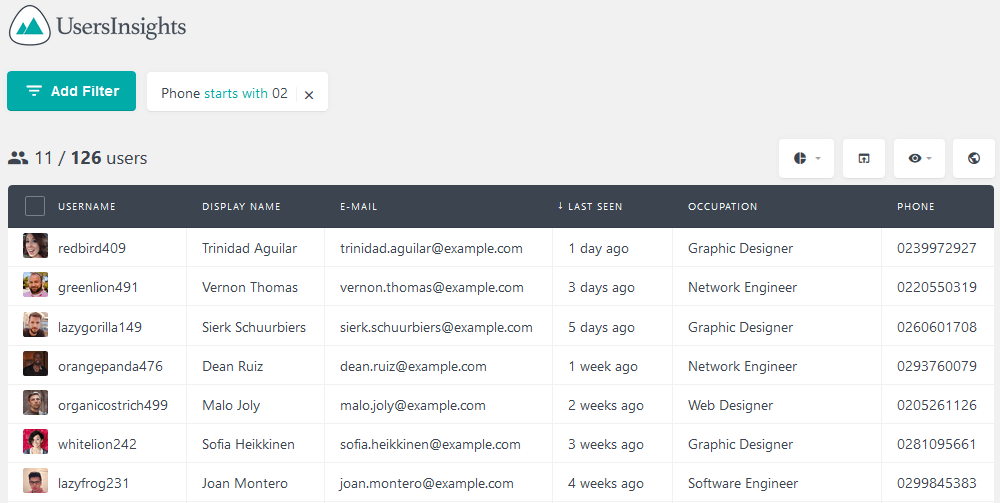
Another interesting feature is user groups. With it, you can add users to specific groups, and quickly retrieve this information later. In addition, the user groups have colors, and can easily be identified in your users’ table.
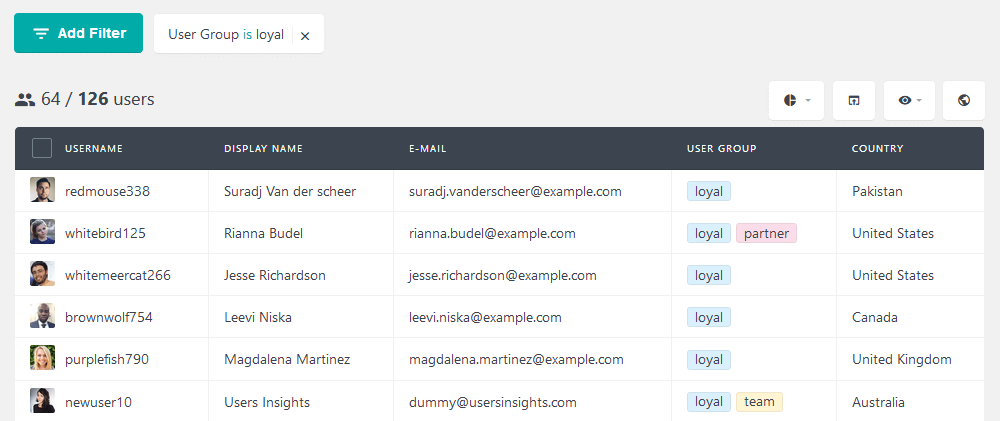
After you know your users, you may want to get in touch with them. For that, you can export their data, and import into MailChimp or other similar services. You can even use this feature to do a periodic clean up of your WordPress user accounts.
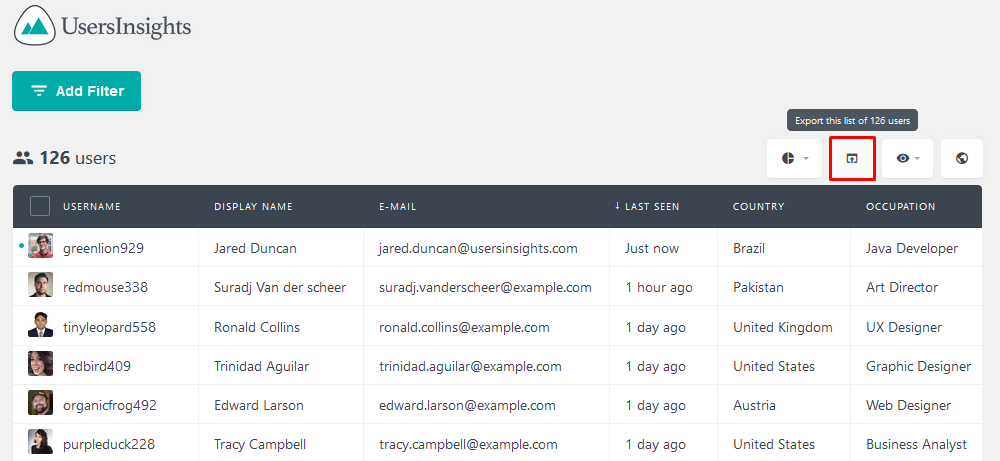
And if you use the custom fields that are visible, you can create powerful mailing lists. For example, you can create a campaign just for users in the United States. Or you could create a campaign just for developers. Or even both! Customization is the key to success. Therefore, once we know our customers better, it’s possible to provide custom experiences in bulk.
Conclusion
Today we looked into how to use WordPress as a contact management system. We saw the importance of keeping your customer contacts, as well as collecting all the information you can. Furthermore, we investigated how easy it is to turn any WordPress site into an online contact management system.
Next, we discovered some plugins to help you out in this process. They’re going to help you collecting and processing your data. By the end of the day, you should be able to put these pieces together and create your contact database.
We hope you enjoyed this article and see you again next time!
